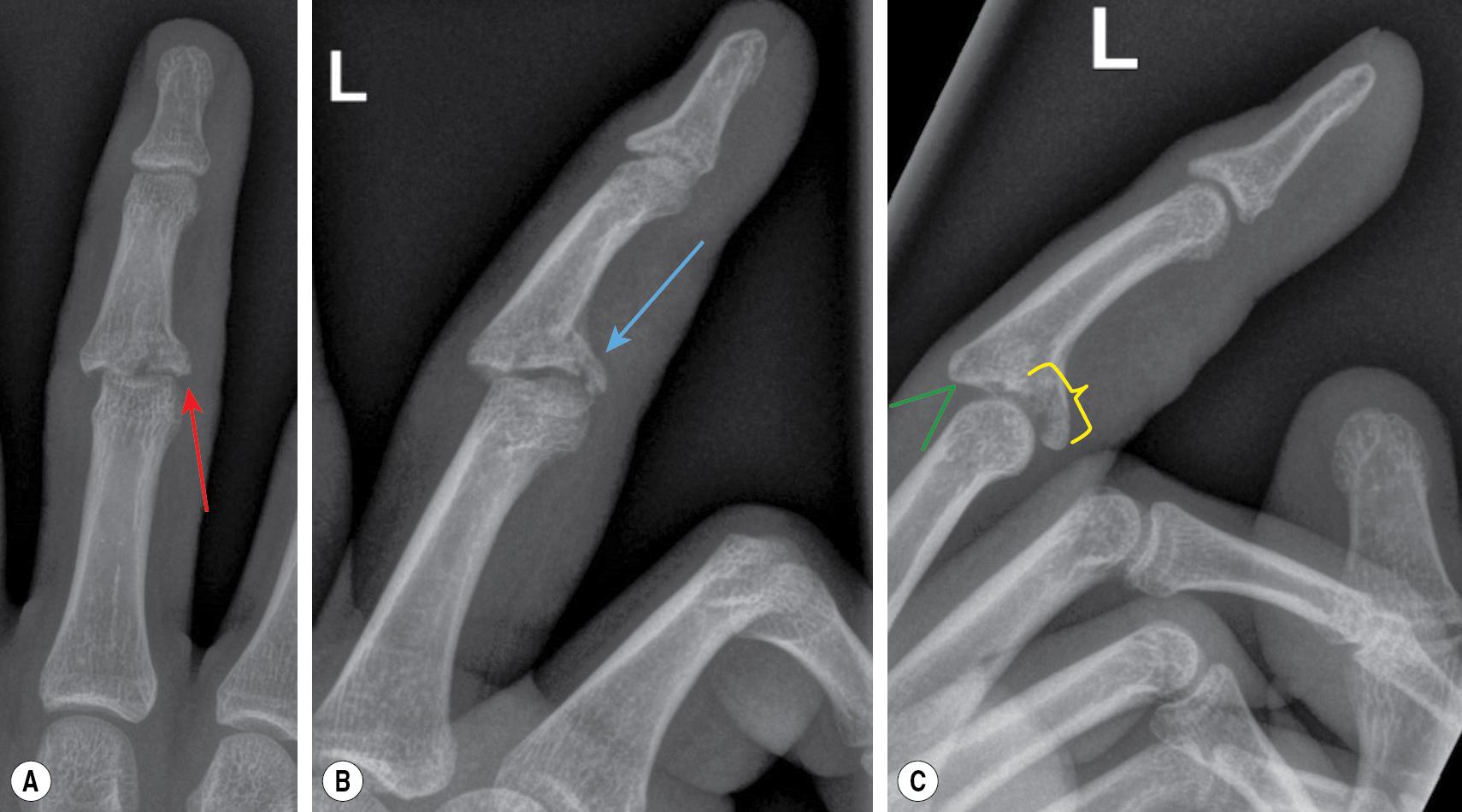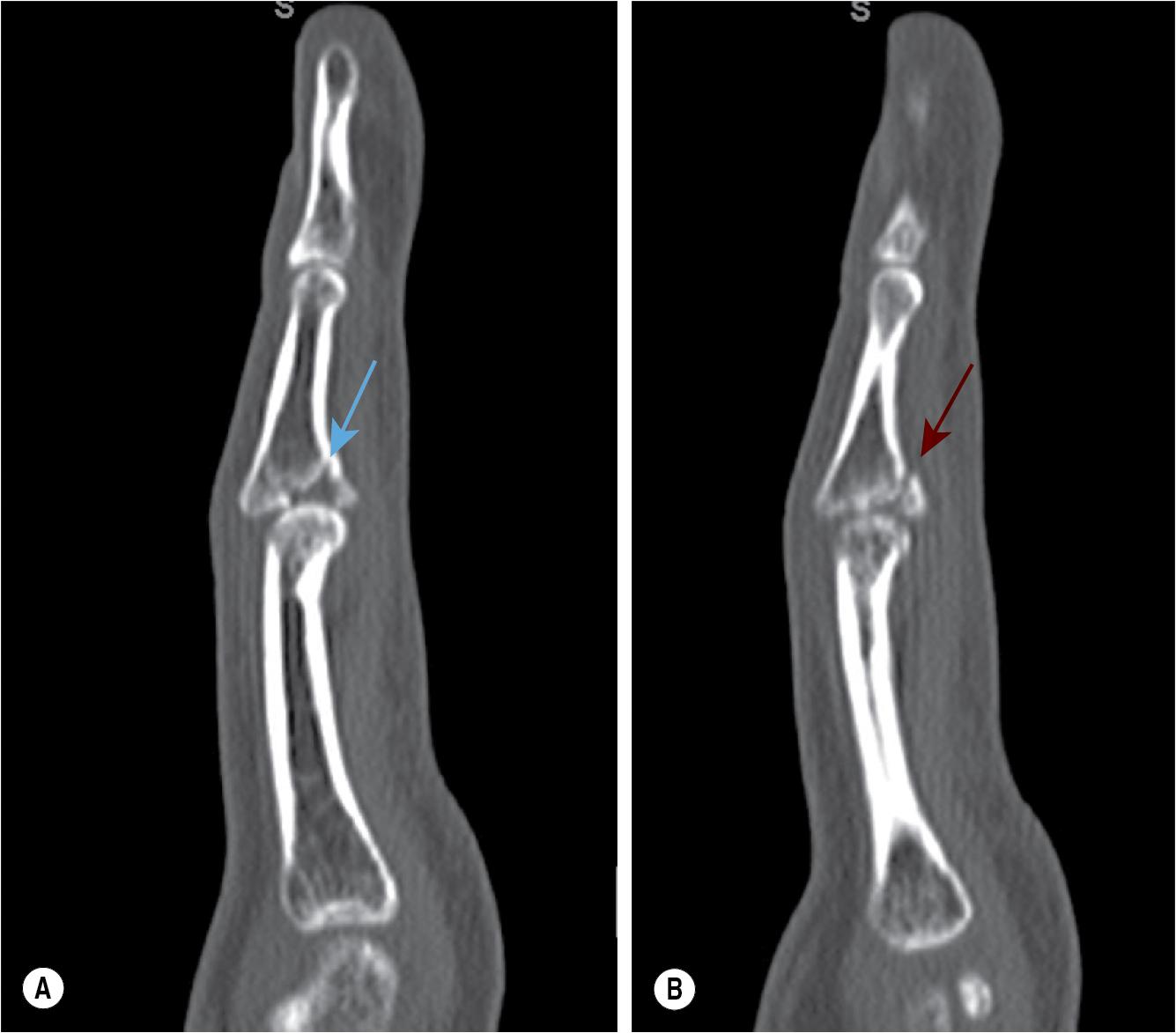Physical Address
304 North Cardinal St.
Dorchester Center, MA 02124
Indications include:
Unstable proximal interphalangeal (PIP) joint fracture–dislocations in which more than 50% of the palmar base of the middle phalanx is fractured or greater than 30 degrees of PIP joint flexion is required to maintain stability.
Fracture of the palmar base that results in loss of the cup-shaped geometry and buttressing effect of the volar lip. Hemi-hamate arthroplasty restores joint congruity and stability and permits early motion.
Comminuted lateral plateau fractures of the base of the middle phalanx.
Joint salvage after failed treatment of complex fracture–dislocations of the PIP joint.
Concentric PIP joint reduction can be maintained with open reduction and internal fixation (ORIF) of a large, noncomminuted volar lip fracture.
Loss of integrity of the dorsal cortex of the middle phalanx to permit fixation of the graft.
Damage to the cartilage surface and head of the proximal phalanx that prohibits a smooth articulation with a reconstructed middle phalanx.
If a patient has preexisting arthritis, they may be a better candidate for arthrodesis or arthroplasty.
Injured or arthritic hamate carpometacarpal articulation.
The PIP joint is inspected for stability in both an extended and flexed position.
If greater than 30 degrees of flexion is required to maintain stability, then reconstitution of the middle phalanx articular surface is indicated.
Examine the sagittal alignment with the finger extended, looking for collinearity of the proximal phalanx and middle phalanx.
Evaluate coronal plane alignment, assessing for lateral deviation that suggests asymmetric compression of the articular surface ( Fig. 13.1 ).

Record active and passive range of motion of the affected finger.
Standard radiographs (anterior-posterior, oblique, and later) are obtained to evaluate the cortical and articular surfaces. The base of the middle phalanx and the proximal phalanx head should be evaluated ( Fig. 13.2 ).

A computed tomography (CT) scan can be helpful in determining more detailed anatomy. In noncomminuted circumstances, ORIF may be favored over arthroplasty in acute or subacute cases ( Fig. 13.3 ).

Become a Clinical Tree membership for Full access and enjoy Unlimited articles
If you are a member. Log in here